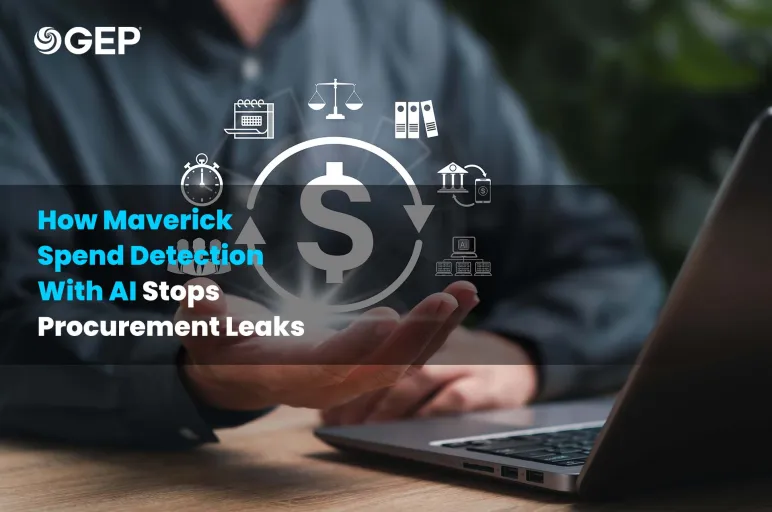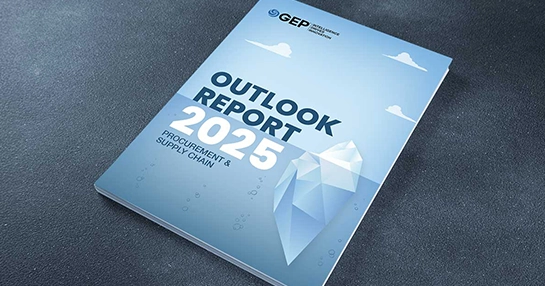
Procurement’s Hidden Leak: Why Maverick Spend Still Slips Through
- Rogue buying drains budgets and weakens supplier compliance.
- Traditional AI flags issues too late to fix them.
- Agentic AI in procurement software can close the loop for good.
October 28, 2025 | Spend Management 4 minutes read
Every procurement leader knows about it, yet it keeps happening. Maverick spend quietly eats into budgets. It looks small at first: a one-off payment for office equipment, a local vendor hired outside the sourcing process. But multiplied across regions and departments, these “exceptions” can account for up to 20% of indirect spend, according to GEP research.
That leakage doesn’t just inflate costs. It undermines contract compliance, risks duplication of suppliers, and weakens negotiating power.
Procurement policies alone can’t prevent it. Even with modern eProcurement tools, employees still find workarounds when buying processes feel slow or inflexible. And that’s the real problem — not the lack of rules, but the gap between policy and usability.
Explore 101 AI Use Cases
Real-world use cases that show how AI is transforming every stage of procurement
Where Current AI Tools Fall Short
Most organizations now use AI to analyze spend data or identify anomalies. But the issue isn’t detection — it’s timing and context.
Traditional AI identifies non-compliant purchases after the money is spent. What's happening here is that the insight arrives too late to correct behavior or recover the loss. Static rules and pre-trained models struggle with nuance.
According to Gartner, 60% of enterprises that use AI in spend analytics still have to rely on manual follow-ups to interpret results. That gap between insight and action keeps compliance reactive rather than preventive. Teams drown in alerts but lack clarity on which ones require attention.
To sum up, without unified data, AI models operate blind to context — leading to false positives and frustration among users.
A Missing Link: Behavioral Insight
Maverick spend isn’t just a data anomaly. It’s a behavioral signal. People keep going around procurement not because they enjoy breaking policy, but because they see the process as slow, confusing, or irrelevant to their needs.
Addressing that behavior requires visibility into why non-compliance happens. Is it an outdated supplier catalog? Slow approvals? Poor communication of contract benefits? Without those answers, AI becomes a watchdog, not a guide.
This is where a new layer of intelligence — behavioral analytics combined with feedback loops — can change the picture. By tracking transaction intent, approval patterns, and user interactions, systems can predict likely maverick spend before it happens. Instead of flagging after the fact, the software can nudge users toward the right supplier or contract in real time.
Companies that integrate behavioral insight into spend management typically reduce off-contract purchases by 30% in the first year, according to Everest Group. That’s not just savings — it’s smoother compliance.
The Turning Point: Agentic AI in Procurement
Agentic AI — AI that plans, decides, and adapts autonomously — is redefining how procurement operates. Unlike rule-based systems, agentic AI doesn’t just process transactions; it understands purpose and outcome.
In unified procurement platforms such as GEP SMART, an AI agent can monitor all incoming purchase requests, comparing them against approved suppliers, contracts, and policies in real time. When a deviation appears, it doesn’t just issue a red flag. It acts. The agent can reroute the request to an approved vendor, suggest a compliant catalog item, or escalate for review if a new supplier might actually add value.
Each interaction teaches the system. Over time, it learns why users deviate, and accordingly feeds that insight back into procurement planning. This creates a closed-loop mechanism: detect, correct, and prevent.
Furthermore, as the AI works within the existing workflow, it doesn’t disrupt operations. Users get quick recommendations instead of error messages, enabling the procurement teams with real-time visibility without chasing reports.
Closing the Loop: From Detection to Prevention
A company’s ability to manage maverick spend says a lot about its procurement maturity. Reactive systems can only limit the damage. Agentic AI changes the approach from control to collaboration.
Instead of a compliance officer, it becomes a coach. It guides employees toward approved paths, updates catalogs when gaps appear, and strengthens supplier relationships by keeping spend aligned. Over time, it turns procurement data into a learning system — one that continuously refines itself based on actual user behavior.
For chief procurement officers, that means more than just savings. It means better contract utilization, stronger supplier partnerships and fewer audit risks. It also means freeing procurement from its policing role and letting it focus on strategy.
As GEP’s research on procurement orchestration notes, AI that connects processes across sourcing, contracting, and payments doesn’t just streamline operations — it builds trust between teams. The same principle applies here: alignment between people and systems closes the gaps that let maverick spend thrive.
Ready for Growth? GEP Has the Answers
Transform your business with our AI-powered source-to-pay solutions
The Future: Procurement That Thinks Ahead
AI won’t eliminate maverick spend overnight, but the path is clear. Agentic AI represents a practical shift from static oversight to active orchestration.
Maverick spend used to be the cost of doing business. Now it’s a sign of an outdated system. With the right procurement software powered by AI agents, organizations can finally turn what was once leakage into insight — and insight into action.
Procurement leaders ready to close that loop should start where the data is strongest: high-frequency, low-value purchases where patterns are easy to trace. Build confidence there, expand gradually, and let the AI learn from every cycle.
That’s how maverick spend detection stops being an audit topic and becomes part of how procurement works every day — intelligently, automatically, and at scale.



